
© 2010-2021 by Fine Arts of the Southwest, Inc. All rights reserved.
Unauthorized reproduction or use is strictly prohibited by law.
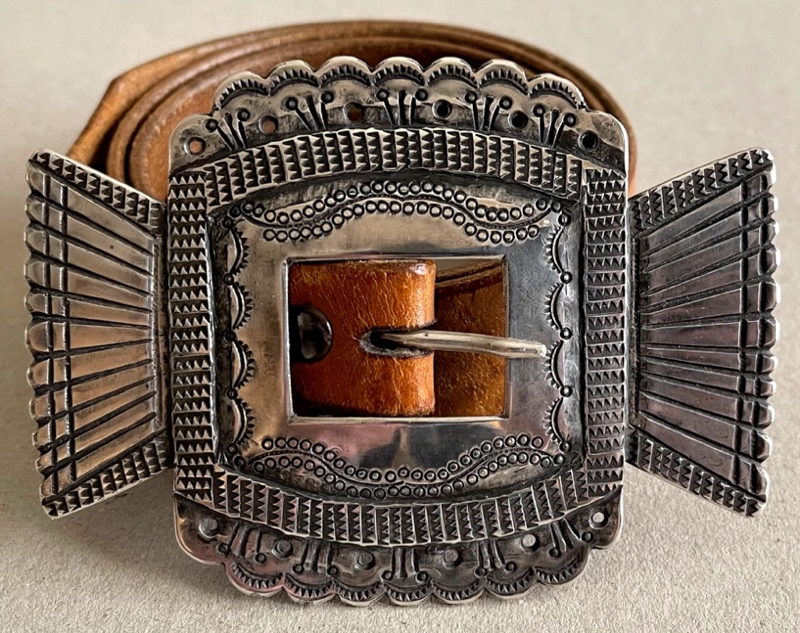
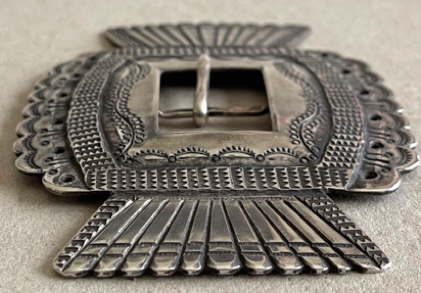
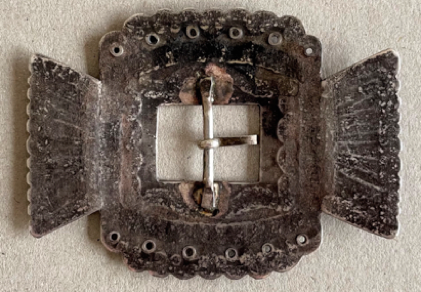
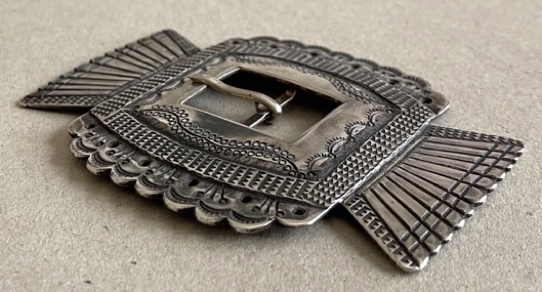
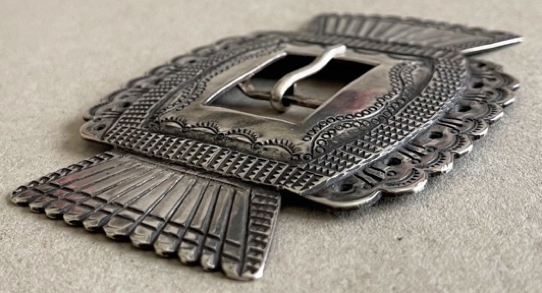
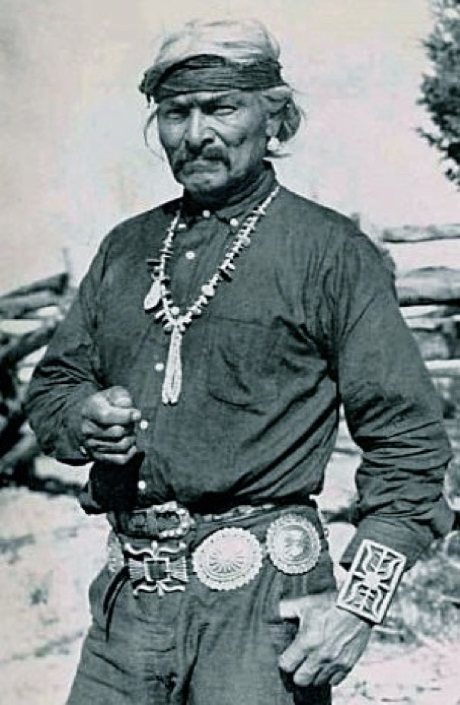
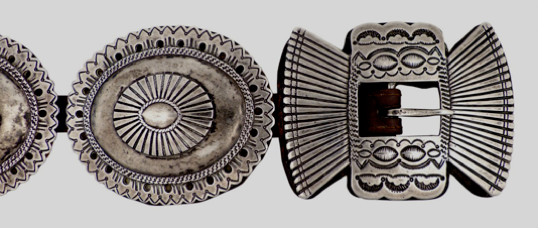
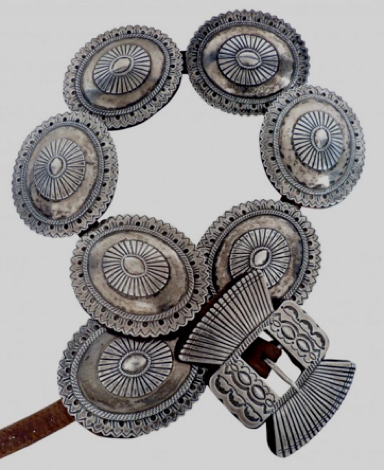
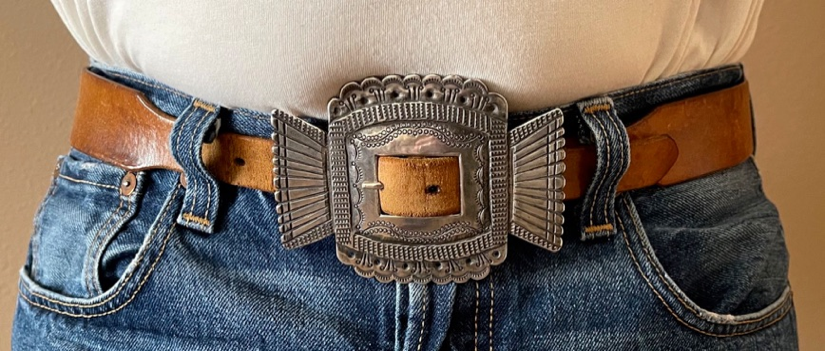
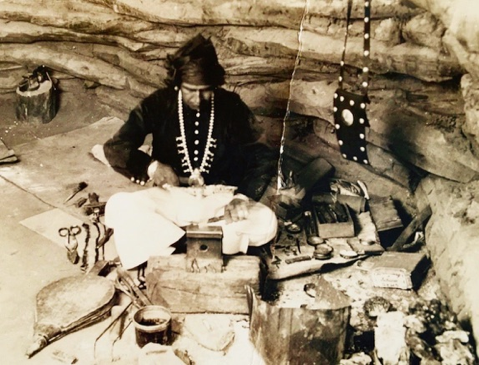
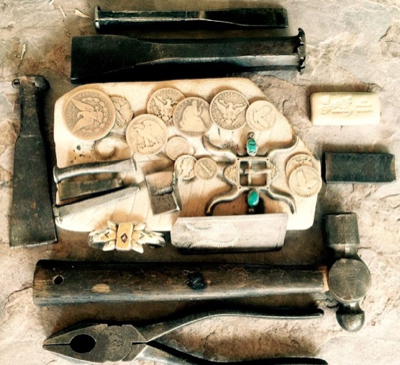
A Classic-Period 2nd-Phase style
Navajo silver belt buckle, c.1890-1910
THIS IS, QUITE SIMPLY, A WHOLE LOT OF GREAT BUCKLE. This large early Navajo silver buckle was most likely made for a Classic-Period Navajo silver 2nd-Phase Concho belt, c. 1890-1910. The perforated top and bottom borders of the buckle very nicely matches the typically perforated perimeters on the large oval silver conchos of this time period and style. Too, the buckle’s larger size nicely matches the size of such 2nd Phase conchos as can be seen in the photos below.
Before you ask how such a buckle might have possibly become separated from the belt it might have been made for, we will tell you one possible scenario which involves gambling. Traditional Navajo men were very fond of gambling at the turn of the 19th/20th century time period when this buckle was made and they took many opportunities to indulge in the pastime. During various larger social occasions such as squaw dances and sings, groups of men would bet enthusiastically on all manner of things, but horse racing with their personal horses was a favorite betting activity. And what was the currency of the bets? Often it was a single silver concho or a silver buckle or occasionally an entire silver concho belt. This activity is chronicled in considerable and interesting detail in historic Santa Fe author Oliver LaFarge’s classic Navajo account “Laughing Boy.”
On to the particulars of this outstanding buckle. The buckle is traditionally made of cast ingot-silver almost certainly obtained from melted-down American and/or Mexican silver coins. A quantity of coins would first be
melted down into a cast ingot silver “slug” which would then be hammered out to form the body of the buckle.
This buckle is made in a traditional “Butterfly” shape with wings on both sides of the central panel. Then the real fun began; this extremely talented silversmith decorated this buckle with an extraordinary amount of very finely done stamped, filed and chisel worked designs, some of the most elaborate and beautiful we have ever seen.
The richness, precision and overall complexity of these designs is truly fantastic. The curvilinear elements in the buckle’s central panel are unique in our experience and these graceful, almost floral designs were formed with a continuous series of circular round “end-of-file” stamps. The multiple varied textures and design patterns created by the profusion of different design elements gives the buckle a marvelous and compelling appearance. In another very subtle touch, the buckle is just very slightly domed or curved in shape to better fit on the waist.
The buckle measures an impressively-sized 4 1/4” in width and 3 1/4” in height and it weighs a substantial 81 grams
or 2 7/8 ounces. It will accept a belt leather of up to 7/8” in width. The buckle is in excellent original condition with a certain degree of age-appropriate wear from its century-plus of existence.
The buckle glows like a big silver beacon emanating the warm bright “white” color which comes from the old coin ingot silver and it has a superlative aged surface patination and feel. It would be equally striking worn by either a man or woman with jeans or over a little black cocktail dress. It’s an ageless, timeless, absolutely gorgeous classic.
Please note that the leather belt pictured here is for demonstration purposes only and is not included
in the sale of the buckle. We can recommend an excellent custom belt maker in Santa Fe, if desired.
SOLD
At left, a Classic-Period Navajo silver 2nd-Phase concho belt, c. 1890-1910. Notice the distinct similarities between the buckle pictured in
the photos above and the buckle featured here on our page; a similar shape and layout, a similar overall size and a similar type and style of stamp chisel and file worked decoration, particularly in the treatment of the butterfly’s “wings”. Both of these buckles could have very easily been made by the same silversmith. At right, a Navajo man wearing a similar Classic 2nd Phase Concho belt with a different type of tufa-cast silver buckle.
Left top and bottom photo source and © sneum.com. Right photo source and © “The Navajo and Pueblo Silversmiths” by John Adair.
At left, a Navajo silversmith at work in his hogan, c. 1920. At right, period coins and Navajo silversmith’s tools of the types used to make this buckle.